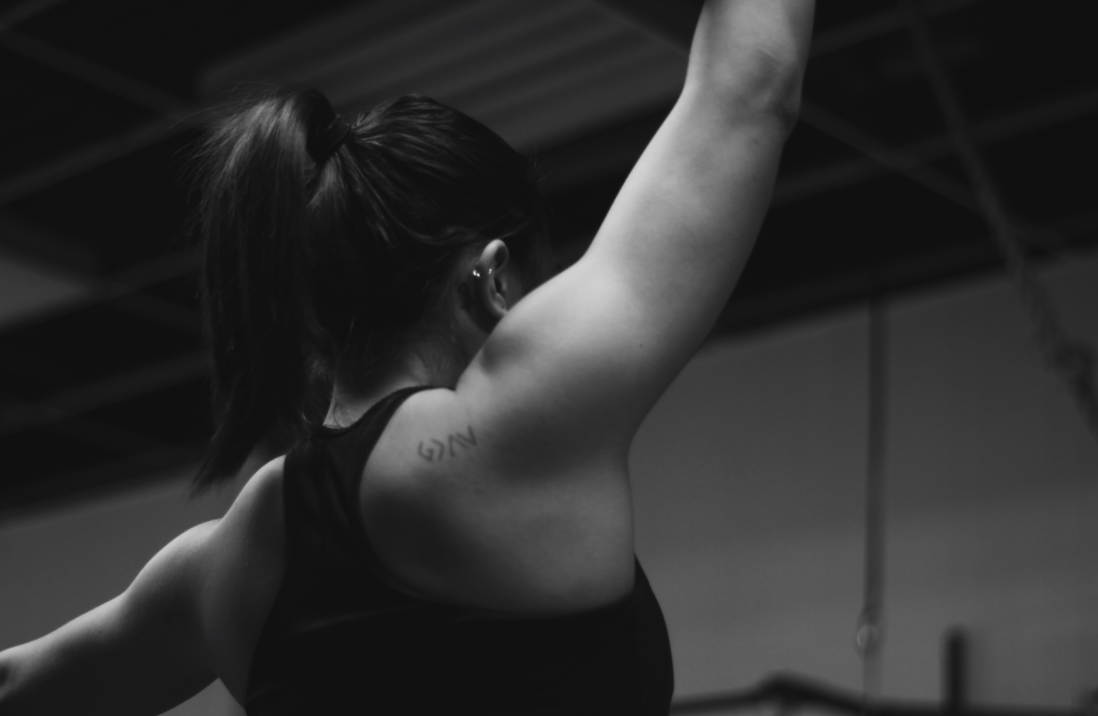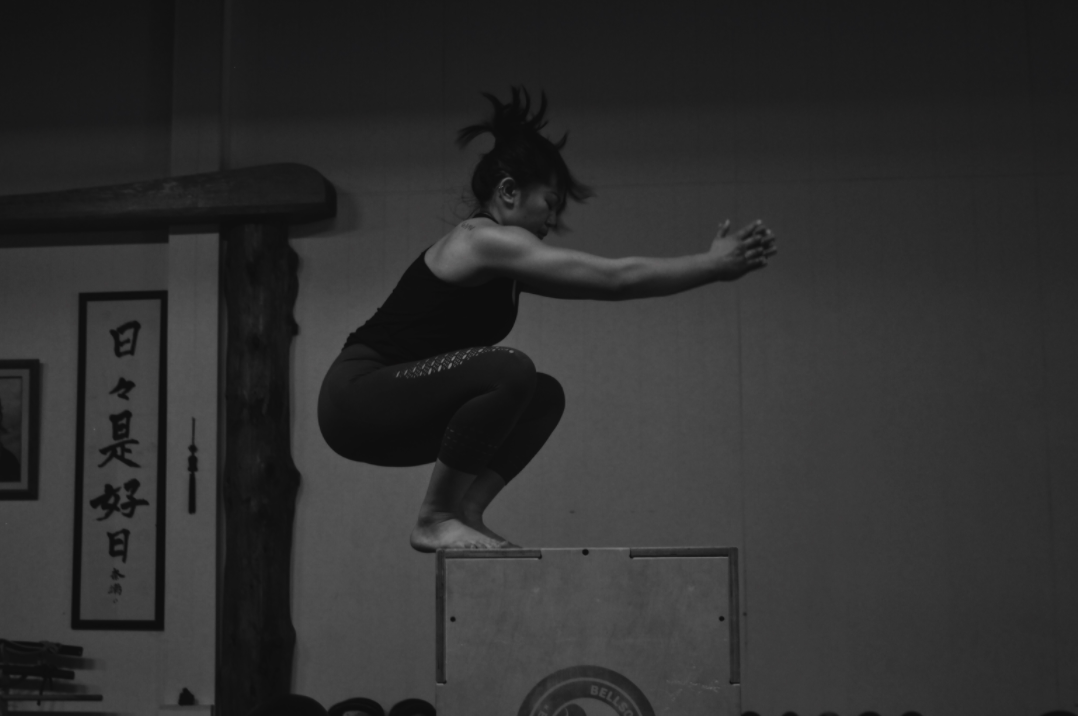RESTORING MY FITNESS NARRATIVE: A JOURNEY THROUGH ANOREXIA NERVOSA
By Coach Charissa
Approximate Reading Time: 4-6min
TRIGGER WARNING: Anorexia Nervosa
For a long time, I felt disconnected from my body. Movement was a necessity to get from point A to point B. Fitness was a punishment for caving into my cravings. I reached a point in which, objectively, my goals were reached. However, the wave of emotion that followed didn’t match what I had anticipated to feel. The familiar dissatisfaction at the look of my reflection remained. The panic of “not working hard enough” took over in my stomach. The exhaustion of not knowing what more to do, not knowing how to achieve that prized “love for my body”, not gaining that satisfaction... This exhaustion had grown.
When I was 16 years old, I worked out 3 hours a day, at a minimum. Burning more than 2000 calories, I was also consuming less than 1000 calories throughout the day. One day I looked down at a scale that read below 100 pounds. I had lost 30 pounds in 30 days. It had been almost a year since my last menstrual period. I had been immune to the feeling of being hungry. I was exhausted, confused, and frustrated. But yet, the only thing on my mind was, “When would I be enough?”
I was diagnosed with Anorexia Nervosa.
WHAT IS ANOREXIA NERVOSA?
Anorexia nervosa is an eating disorder characterized by significant weight loss, that is often tied to a distorted body image and an intense fear of gaining weight, even when underweight. The process of eating becomes an obsession. Restrictive eating habits develop such as avoiding particular food and meals, carefully weighing and portioning food, or the loss of being hungry altogether. Behaviour becomes tied to the need to control weight including intense and compulsive exercise, or purging by means of vomiting or laxatives.
My earliest memories from my pre-teen years were spent standing in front of the mirror, squeezing and flattening the areas that I named my “imperfections.” I often refused to eat or denied being hungry and I feared a day off from exercising, fixated on the idea that a rest day would be detrimental to my progress. I would avoid mirrors, videos, and photos as I knew that a view of my own reflection would lead to hours of looking at the softness of my stomach or roundness of my face. I hid these habits from those around me as I was embarrassed - I did not want to admit that I had a fear of my own body, that I was ashamed of the way I looked. The narrative in my head grew stronger and louder, imprinting itself onto the side of my brain: your worth and value are dictated by the appeal of your body.
RESTORING MY RELATIONSHIP WITH FITNESS
In my eyes, fitness was seen as a punishment, not one that could be of enjoyment. I was convinced that “If I don’t sweat or if I am not sore the next day, then I didn’t work hard enough.” These thoughts were equivalent to being in an abusive relationship: lacking autonomy, a false sense of security and love, and flat out bullying. From an outsider’s perspective, a common question arises with a seemingly simple response: “If you’re in an unhealthy relationship, why don’t you just walk away?” Unfortunately, it is not easy. It is painful, messy, and daunting.
All I wanted was to be content and accepting of the way that my body was with a genuine appreciation of what it could do. I will be honest, the process is not linear. The journey comes with sporadic ups and downs, moments of triumph, and moments where you fear that you have regressed; that all progress has gone down the drain. It’s a daily effort, a full-time job. Every day isn’t perfect, and some days I will see some of my old habits trickle into my daily life. I continue to challenge this ever so ingrained narrative and question my streamline of thinking.
SHIFTING THE NARRATIVE: LESSONS THAT I LEARNED
#1. Body neutrality in place of body positivity
For some, body positivity is a way of shifting the narrative around one’s body image. For me, no matter how many times I told myself that I loved my body I didn’t genuinely believe it. Instead, I learned about the term body neutrality: the act of focusing on the achievements of one’s body, rather than its appearance. Rather than the fixation around loving my stomach or hating my stomach, I shifted towards celebrating the strength of my core and the power of my legs. Shifting the narrative means reassigning what is of value and how I define my worth.
#2. Move with intent and for longevity
Throughout my journey, I feared that I would be viewed as weak - mentally, physically, and emotionally. In an effort to take back my body, I engaged in weight lifting, which later led to powerlifting. In this, I saw my old habits creep in: the desire to please, to impress, and to be the best. I was motivated by the phrase, “no pain no gain,” which led to injury and continued exhaustion. After much frustration and shame, I acknowledged that this mindset was not sustainable. I didn’t want movement to be a burden, one of continued aches and pains, nor one of obligation. I pictured what I wanted movement to be like 10, 20, 30 years down the road: moving with confidence, with strength, as well as with grace and resilience. Moving with purpose means building strength through push-ups to be able to sustain a fall rather than seeing how heavy of a bench press I can achieve. Purposeful movement looks like taking the time to listen to what my body is saying and investigate the root cause rather than hiding from it and prolonging the pain. Moving with intent also looks like taking the rest days that I need, to allow my body to recover and build a sustainable foundation.
#3. Find your play and enjoy it
From my own fitness journey and my experiences as a coach, I have witnessed the road to fitness take a turn because of a lack of engagement, motivation, and excitement. A crucial element to sustaining one’s motivation in movement is play - finding aspects in your activities that you genuinely enjoy! Not only should movement be meaningful and equip you for your future, but it should be enjoyable and unique to you.
WHY I BECAME A COACH
My relationship with fitness was never perfect and is still a work-in-progress. Throughout my journey with Anorexia Nervosa, I searched for ways to feel more connected with my body. I learned that there was no streamline solution, that each person’s journey is unique and will require a personalized approach. I was inspired by those around me who introduced me to a novel way of thinking and validated my experiences. My greatest hope as a coach is to help others investigate and navigate their relationship with fitness and their body. I hope to encourage the exploration of what our bodies are capable of and strengthen one’s enjoyment to move.



